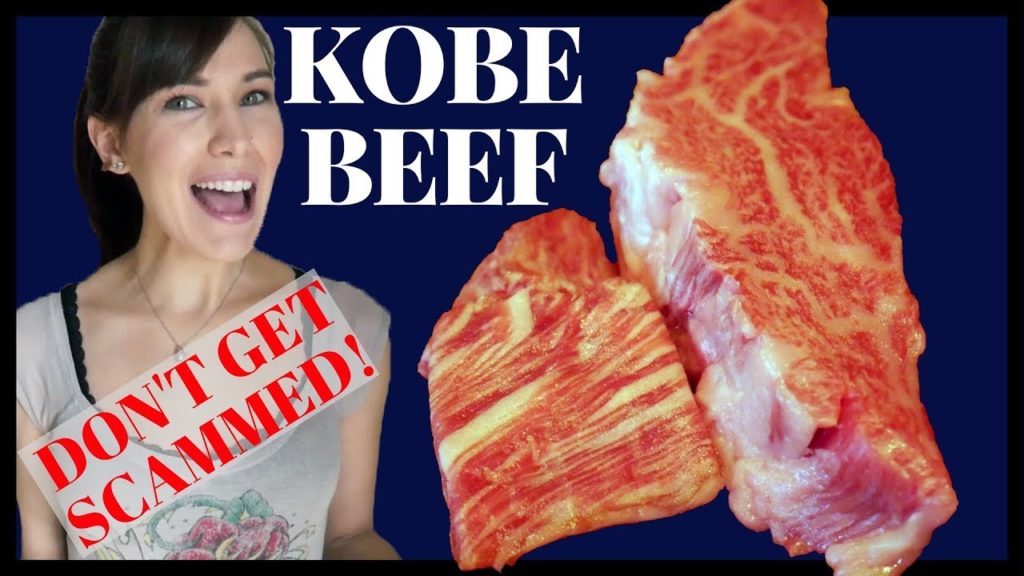Japanese Government Website- Full List of Kobe Beef Venders-
* We ate our Kobe Beef at one of the best teppanyaki style restaurants in Kobe: Bifteck kawamura ビフテキのかわむら
Kobe Beef! One of the world’s most famous and most scarce delicacy. What is it? Why is it so special? Why is it so expensive and WHY have you most likely never had it?!
Hi, everyone! It’s Sonnie coming at you from Japan! Recently Joe and I were in Kobe. Exploring an awesome new city and feeling happily at home in another hostel, but our real reason for being there wasn’t to see (shows shots of each) the Kobe Tower, Kobe’s China Town, or some huge and amazing temples. No. It was for the meat! Kobe beef to be exact.
Around the world, Japanese or wagyu beef is known for being some of the highest quality, but Kobe beef is a step above even that. There are incredibly strict guidelines for what can be called, Kobe beef. There needs to be a specific marbling ratio level of 6 or higher. Meaning the fat in the meat is spread out to be found in every bite. The type of cattle: Tajima live longer than American cows so that they can be fattened longer. Kobe beef fat itself is different from other cows as it contains high levels of unsaturated fatty acids, which melt at much lower temperatures than saturated fatty acids. When testing for the quality of meat, the farmer will often take a slice and hold it in their hands and watch the fat melt. It also melts on your tongue.
As you can imagine, not many cattle fit the bill so to speak. Only 3,000 to 4,000 cows per year qualify and that’s it! That’s the total number of cows per year for the entire world! Approximately 90% of those cows stay in Japan. The majority of the remaining 300-400 cows then go to Macao, Hong Kong and Singapore. As of this video, only 27 restaurants in the US serve authentic Kobe beef and only 9 in the UK (all of them are in London by the way. Sorry Scotland)!
Due to this lack of supply for the now immense demand, you can imagine the scams that have revolved around Kobe beef! Many restaurants have been caught as advertising that they sell it when they don’t. People have paid hundreds to try what they thought was Kobe beef only to later find out it was wagyu. To avoid a fine, some restaurant have begun to use the phrase, “Kobe-style” beef or “kobe-style” burgers instead. In the US, it’s not even illegal to market food as something they’re not, (champagne, parmesan cheese, wagyu/kobe beef) and the burden falls onto the consumer to know when they’re being conned.
With all of these scams out there, how can YOU know when YOU’RE trying the real thing! If you’re in Japan, every restaurant that sells Kobe beef displays a 10-digit ID number and sometimes even a QR code that corresponds to the individual cow from which the cut of beef was taken. For outside of Japan, all Kobe beef is shipped with a certificate detailing the animal’s lineage, birthdate slaughter date, weight, and more. But unless you can read Japanese, that may not help you much so I’d recommend checking out the website I’ve linked below. The Japanese government actually keeps a list of each restaurant in every country that sells authentic Kobe beef on it.
And in case you’re curious. The kobe beef steak we got was 150 grams for 13,000 yen. That’s why we got one order of the proper beef steak and one order of the kobe burger for 2,000 yen. Luckily, in Japan you don’t have to tip … because that’d just be crazy!
FOLLOW ME! (^_^):
*On Twitter: @SonnieTravels
*On Instagram: @SonnieTravels
Music:
Arcadia – Wonders by Kevin MacLeod is licensed under a Creative Commons Attribution license (
Source:
Artist:


AloJapan.com